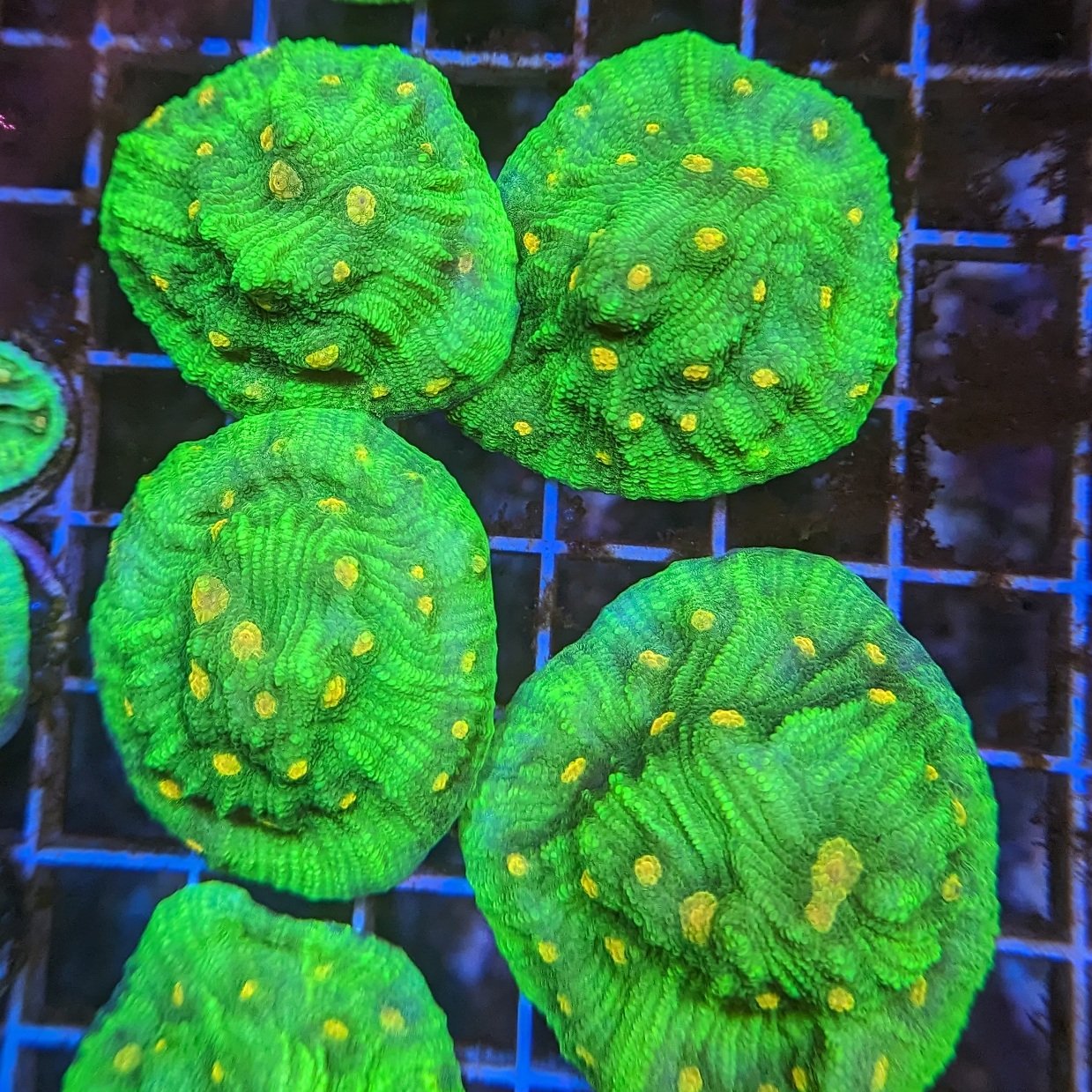Description
Undoubtedly you have considered keeping sponges before, that’s why you’re here! This sponge is photosynthetic, and even has the ability to expel AIR. Hardy enough for anyone, all this guy asks is that you keep some fish, and feed them!
Care Levels *
-
- Bulletproof – To be deemed “bulletproof” at TRF, we have to know that even the newest of newbies couldn’t mess this one up! Therefore, it cannot be a hard coral, (sadly, as some of our hard corals have earned this title) and it must have already been an easy to keep species to begin with. These corals can live through almost anything you can throw at them, and in many cases already have!
- Easy – While not bulletproof, it’s close! This one won’t mind terribly if your water parameters are a bit off, or if nitrates are a bit high (less than 50). Just don’t shock them too hard, and they should do well.
- Moderate – You should probably be well aware what your current calcium and alkalinity levels are to choose this level. While they will still be resistant to mild swings, a bit more care should be taken to make sure your tank is remaining somewhat stable.
- Expert – Time to break out the phosphate test; if it gets too low, this one might throw off all of its skin. If it gets too high, it will probably turn brown and eventually die. If you want something that won’t “take over your tank”, this one will be it!
Feeding *
* While no direct feeding is necessarily required if you have good lighting and fish that are being fed, (it is an expert at filtering for tiny particles) for its best health and growth we recommend a broadcast feed of Reef Nutrition TDO Chroma Boost™ A .
Lighting Requirements *
* Our corals are grown in natural sunlight and have been acclimated to Radion lighting; many can take extreme and even sudden adjustments. While we cannot say how high or how low you should place it in your tank not knowing what lights you have, we can give you a range based on our own Radion G5 XR Pros. If the coral looks pale or hasn’t extended fully in the first week or so, this is probably because it is receiving too much light; it is unlikely to be not enough if you have a light meant for corals. Remember, that piece has had to deal with a week of cloudy or snowy weather before in our greenhouse!
Flow Requirements *
This can be a tough one to gauge as well, after all, what is meant by high flow? Largely comparative, it is difficult to say what high flow means in one tank vs. another. Below is our best representation of what we mean by our given flow levels, comparative to our Current-USA eFlux Wave and Flow Pumps.
-
- Low – This does not mean NO flow, although it may be able to take that. However, take care not to give this one too much – you may blow it right off of the rock!
- Moderate – This one will do better if you can see it moving a bit, a gentle sway. Think waving hands at a concert or football game…a medium tempo back and forth action.
- High – Forget the sway, this coral says HIT ME and means it! That said, you can blow the skin off any coral with too much flow in one spot, though that probably won’t happen with this one if you are using diverted flow powerheads.
*** Handled incorrectly, any coral can be dangerous! Special care must be taken with the zoanthidae family in particular, as many of them contain palytoxin. Since they have been known to lose this toxin in captivity, and even cyanobacteria and dinoflagellates have been discovered to contain it; it is best for the home marine aquarist to proceed with caution when handling any of their animals or rocks.
-
- When removing your coral, try to handle it by the edges of the rock, or better yet, the bottom. This will not only help protect you, your coral will appreciate it, as well!
- If you have an open wound on your hand, it may be necessary to wear gloves. Latex are fine, or the reusable plastic gloves made for aquariums.
- WASH your hands! Since palytoxin needs to enter your body in some way for you to become sick, a simple hand wash will solve most of your problems when doing general tank maintenance and placing corals.











Mary Reid (verified owner) –
It arrived grey and I thought it was dead. It was very big! I’m a newbie and left it in the tank 3 days but was afraid it would nuke my tank so I threw it away. I later found out that they may take a month or so to regain it’s color.
Lance Saba (verified owner) –
I received a massive piece and it is quickly growing onto the rock. Higher lighting has given it a nice color too!